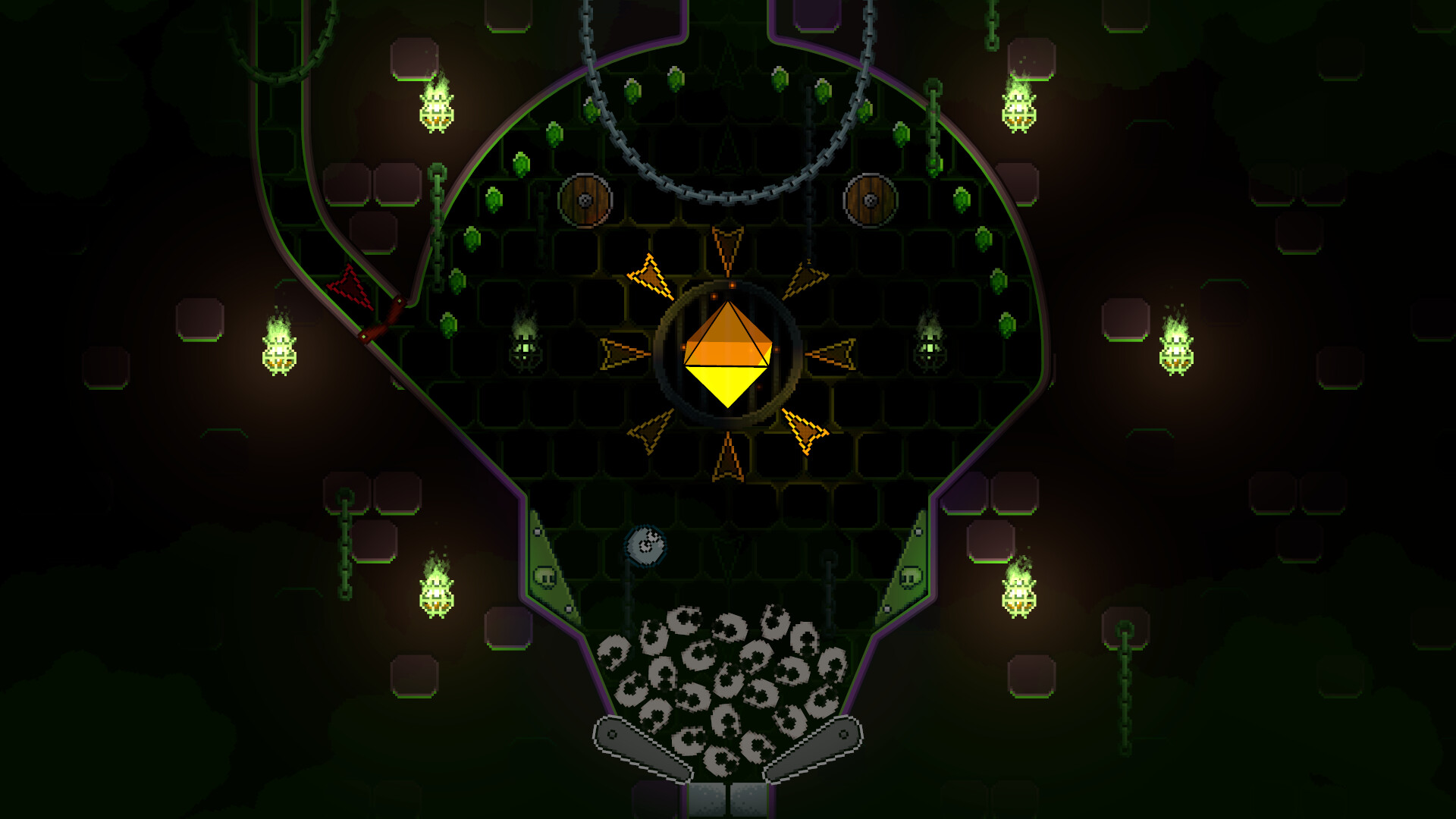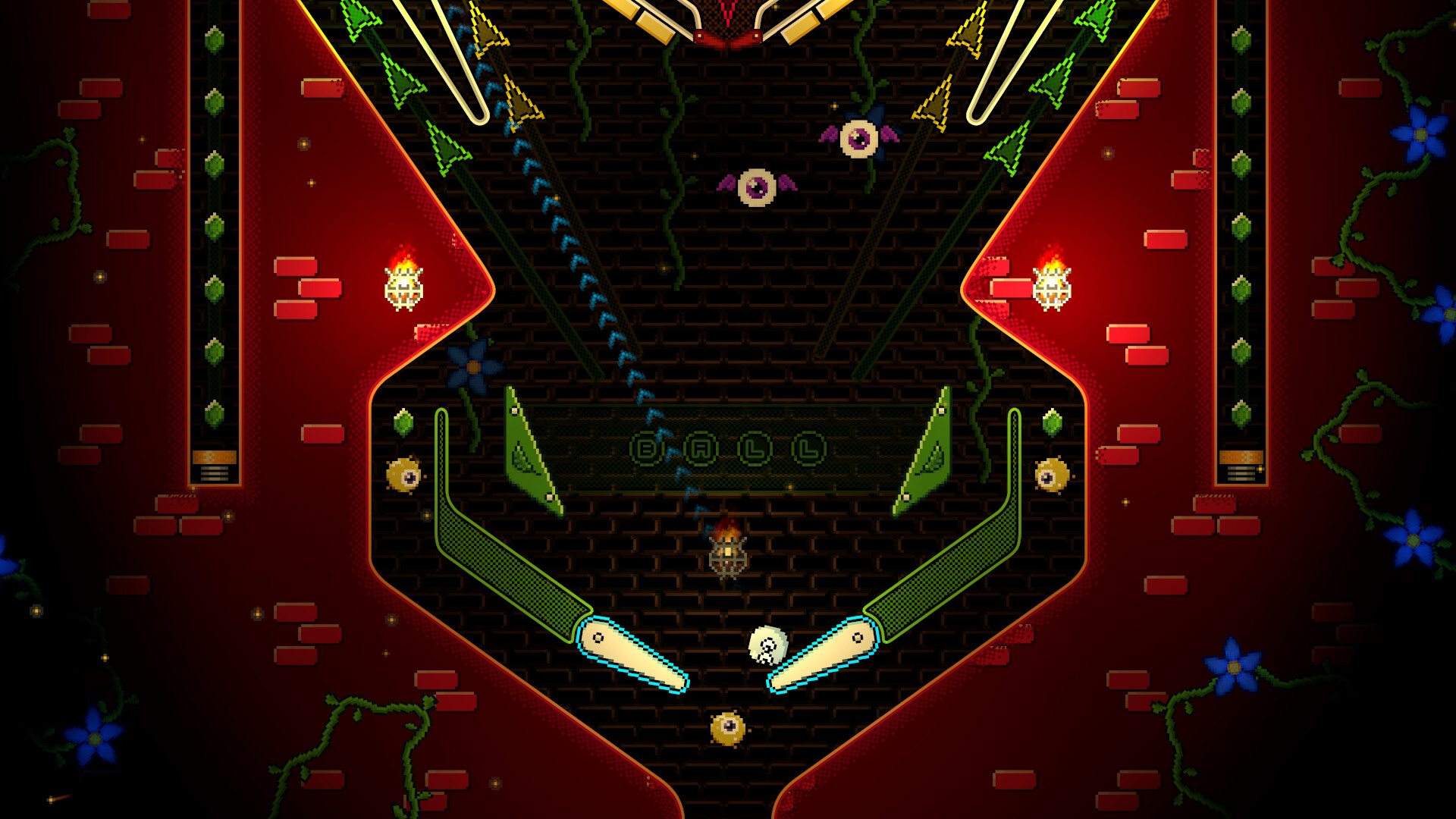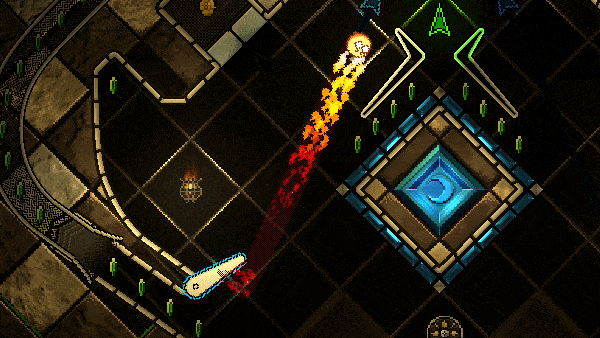After playing three hours and several different sections of Pinball Spire, I’d recommend this one for fans of pinball and those looking for an out-of-the-box Metroidvania to play this fall.
What is Pinball Spire?
Put simply, Pinball Spire combines two popular genres: pinball and Metroidvania. In this one, the second major release from Oakville, Ontario’s Apparition Games, you’ll climb a tower of increasingly difficult boards. To advance, you’ll need to figure out how to exit from the top of each pinball table to get to the next one. In each tower section, you’ll need to accomplish a small set of tasks to move on. In some of the earlier stages, it’s as simple as hitting buttons placed at certain spots on the board. Later in the game, you’ll need to use a power-up that you collect (or multiple) to be able to advance.

Not just a regular ol’ Pinball
In the first half of the game, you’ll gather three power-ups that really can help with progression and puzzle-solving. The first and most crucial to the experience is a slow-down mechanic. This is the most useful tool that I used a lot in my gameplay. By slowing down time right when the ball is about to hit one of your paddles, you will be able to see the exact trajectory and set up the perfect shot. It took me a little while to realize that you can zoom in and out to see the whole table a little bit better, but this combined with the slowdown was an invaluable tool in gameplay. The other two powerups that help you are a fireball and a boost. The fireball allows you to light chandeliers on the table, light up dark rooms and allow your ball to pass through enemies without bouncing. The boost can help you by giving you more momentum. This can help with movement in the desired direction and can also help clear obstacles in your way.

It’s not a cakewalk
This game is rad but my one word of caution for folks who are interested in playing this one is that it’s not an easy one.
I’m not the most dextrous video game player and because of that, I found myself having to lean on the slowdown mechanic a lot. Your power-ups are bound to a mana bar, which is relatively easy to refill (by killing enemies) but I found myself using it to depletion a lot. This problem was exacerbated when I needed to use another power-up like the fireball to get past an obstacle on the table while also leaning on the slowdown. I found myself getting stuck knowing exactly what I needed to do for several minutes while playing but not having the skills to shoot my ball in the correct direction.
There are accessibility options in the game menu that can help to either decrease your mana consumption rate or slow the game down even more when using the slowdown, but part of me wonders why the experience even has a mana bar controlling your powerups to begin with.
Beyond that, like many games in the genre, you’ll have to save your progress at a save point, which at a few critical junctures means that you won’t be able to save your game on a dime. I feel like the game could have also given the players a little more signposting around collecting some of the powerups. Metroidvanias typically make it obvious that you’re missing a critical item to pass a gate/obstacle and I think Pinball Spire could have applied that tenet to some sections that required a power-up to pass.

Pinball Spire is solid
Overall, Pinball Spire is a great pinball game and a good Metroidvania and the mix of the two is pretty novel. The pixel graphics and lighting are really good, the 8-track soundtrack from Starling Tan is solid (and shouldn’t be turned down) and the actual pinball mechanics at play on the tables were fun to play around with.
It’s been years since I’ve dove into a game with this particular combination of mechanics and I enjoyed my time with this one.
A copy of the game was provided by the publisher for this feature. Reviewed on PC (Steam Deck).
Looking for another game with a similar gameplay style? Check out our 2018 review of Yoku’s Island Express!

Jacob is a creator marketing professional, and a fan of video games. He hosts/produces the Left Behind Game Club and is a co-host of Crossplay Conversations. At conventions and bars, he also hosts Video Game Trivia.


1 thought on “Pinball Spire Final Impressions”